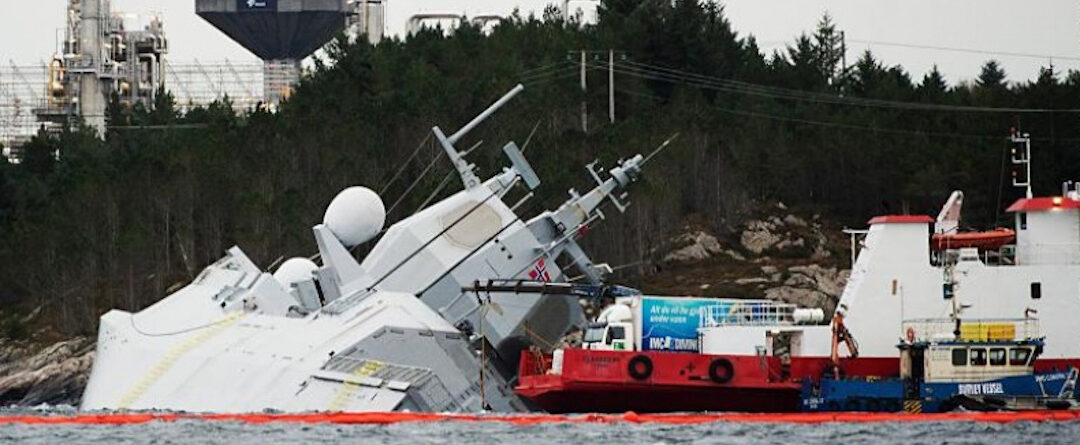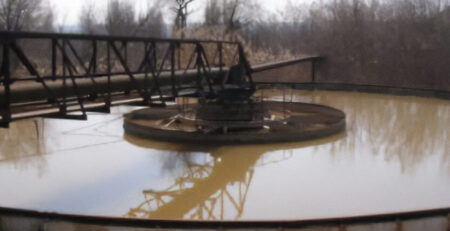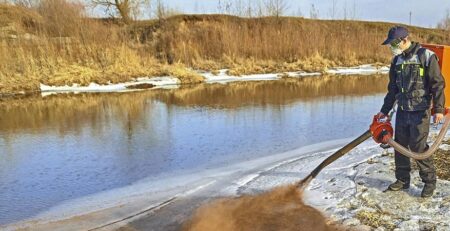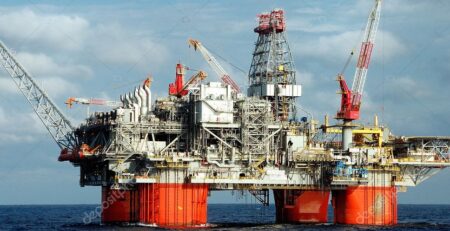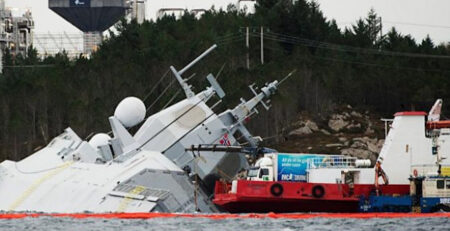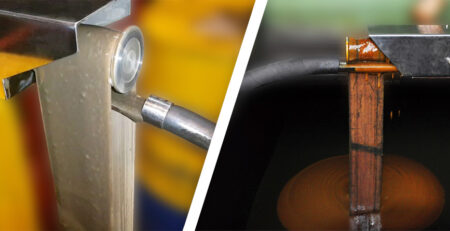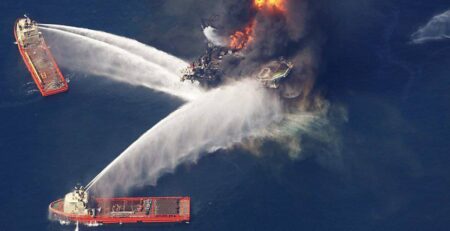International Regulations for Preventing Collisions at Sea PART B
Part B
Swimming and maneuvering rules
SECTION 1. Navigation of ships in all conditions of visibility
Rule 4. APPLICATION
The rules of this section apply under all visibility conditions.
Rule 5. WATCHING
Each ship shall at all times maintain adequate visual and aural surveillance, as well as surveillance by all available means, in relation to the prevailing circumstances and conditions, in order to fully assess the situation and the risk of collision.
Rule 6. SAFE SPEED
Every ship shall at all times proceed at a safe speed so that it can take appropriate and effective action to avoid a collision and can be stopped within the distance required under existing commitments and conditions. In selecting a safe speed, the following factors shall be among those to be taken into account:
- All ships:
- visibility conditions;
- density of traffic, including congestion of fishing vessels or any other vessels;
- vessel maneuverability and especially the distance required to bring the vessel to a complete stop and the turning ability of the vessel in prevailing conditions;
- at night, the background illumination from both shore lights and the scattering of light from the vessel’s own lights
- wind, sea and current conditions and the proximity of navigational hazards
- the relationship between draft and available depths.
- Additional to ships using radar:
- characteristics, effectiveness and limitations of radar equipment;
- any limitations imposed by the radar range scale used;
- the effect on radar detection of sea state and meteorological factors and other sources of interference;
- the possibility that the radar may not detect small vessels, ice and other floating objects at a sufficient distance;
- the number, location and movement of vessels detected by the radar;
- a more accurate estimate of the visibility that can be obtained by radar measurement of the distance to vessels or other objects in the vicinity.
Rule 7. DANGER OF COLLISION
- Each ship shall use all available means, in accordance with the prevailing circumstances and conditions, to determine whether a collision hazard exists. If there is any doubt as to whether a collision hazard exists, it shall be presumed to exist.
- Serviceable radar equipment installed on the ship shall be properly utilized, including observation on long-range scales to provide advance warning of collision hazards, and radar sweeping or equivalent systematic observation of detected objects.
- Assumptions should not be made on the basis of incomplete information, and
especially radar information. - In determining whether a collision hazard exists, the following must first be taken into account:
- A collision hazard must be considered to exist if the bearing of the approaching vessel does not change appreciably;
- A collision hazard may sometimes exist even if the bearing changes appreciably, particularly when approaching a very large vessel or tug or when vessels are approaching within a short distance.
Rule 8. ACTIONS TO PREVENT COLLISION
- Any action taken to prevent a collision, if circumstances permit, should be confident, timely and
consistent with good maritime practice. - Any change in course and/or speed made to avoid a collision, if circumstances permit, should be large enough to be readily detected by another ship observing it visually or by radar; a series of successive small changes in course and/or speed should be avoided.
- If there is sufficient water space, a change in course alone may be the most effective action to prevent excessive approach, provided the change is made in advance, is substantial and does not cause excessive proximity to other ships.
- The action taken to avoid collision with another ship shall be such as to cause her to diverge at a safe distance. The effectiveness of this action shall be carefully monitored until the other ship is finally passed and left behind.
- If it is necessary to prevent a collision or to have more time to assess the situation, the ship shall reduce its course or stop by stalling its propulsion machinery or reversing.
-
- A vessel required under any of these Regulations not to obstruct the movement or safe passage of another vessel shall,
when circumstances so require, take early action to leave sufficient water space for the safe passage of the other vessel; - A ship under a duty not to obstruct the progress or safe passage
of another ship is not relieved of that duty when approaching another ship so that there is a danger of collision and shall, in taking her action, have full regard to such action as may be required under the Rules of this Part; - When two ships are approaching each other in such a way that there is a
danger of collision, the ship whose movement shall not be impeded shall be bound to comply fully with the Rules of this Part.
- A vessel required under any of these Regulations not to obstruct the movement or safe passage of another vessel shall,
Rule 9. NARROW SAILING
- A vessel following along a narrow passage or fairway shall keep to the outer boundary of the passage or fairway, which is as close to her starboard side as is safe and practicable.
- A vessel of less than 20 meters in length or a sailing vessel shall not obstruct the movement of such a vessel, which can safely proceed only within a narrow passage or fairway.
- A vessel engaged in fishing shall not obstruct the movement of any other vessel traveling within a narrow passage or fairway.
- A ship shall not cross a narrow passage or fairway if such crossing would impede the movement of a ship which can only safely proceed within such passage or fairway; this latter ship may use the sound signal prescribed in Rule 34(d) if she has doubts as to the intentions of a ship crossing the passage or fairway.
-
- In a narrow passage or in a fairway, if overtaking can only take place if the overtaken ship takes action to allow safe passage, the ship intending to overtake shall indicate her intention by giving the appropriate sound signal prescribed in Rule 34(c)(i). The overtaken ship shall, if she agrees to overtake, give the appropriate signal prescribed in Rule 34(c)(ii) and take action to allow the overtaking ship safe passage. If the overtaken ship is in doubt as to the safety of overtaking, she may make the sound signals prescribed in Regulation 34(d);
- This Rule does not exempt the overtaking vessel from complying with the requirements of Rule 13.
- A ship approaching a bend or a part of a narrow passage or fairway where other ships may not be visible because of obstructions shall proceed with particular care and caution and shall give the appropriate sound signal prescribed in Rule 34(e).
- Any vessel shall, if circumstances permit, avoid anchoring in a narrow passage.
Rule 10. SWIMMING ON TRAFFIC SEPARATION SYSTEMS
- This Rule applies when sailing on traffic separation systems adopted by the Organization and does not relieve any ship of its obligations under any other Rule.
- A ship using a traffic separation system shall:
- travel in the appropriate lane in the general direction of traffic flow taken therein;
- keep as far as practicable away from the traffic separation line or traffic separation zone;
- generally enter or leave the lane at the end sections, but, if the ship leaves or enters the lane from either side, it shall do so at as low an angle as possible to the general direction of traffic flow.
- A ship shall, as far as practicable, avoid crossing lanes of traffic, but if she is forced to cross a lane of traffic, she shall do so, as far as practicable, on a course at right angles to the general direction of the flow of traffic.
-
- A vessel shall not use the coastal navigation zone if it can safely use the appropriate lane in the adjacent traffic separation system. However, vessels less than 20 meters in length, sailing vessels and fishing vessels may use the coastal navigation zone.
- Notwithstanding the provisions of subparagraph; a ship may use the coastal navigation zone when she is going to or from a port, when she is going to or from a port, when she is going to a shore-side facility, pilot station or any other place which is within the coastal navigation zone, or when she is going to avoid an immediate danger.
- A vessel, unless it is crossing a traffic separation system or entering or leaving a traffic lane, shall not, in general, enter a traffic separation zone or cross a traffic separation line, except:
- in cases of extreme necessity to avoid immediate danger;
- when bound by the word fish within a traffic separation zone.
- A vessel navigating in the vicinity of the end sections of traffic separation systems should exercise particular caution.
- A ship should, as far as practicable, avoid anchoring within or close to the end of a traffic separation system.
- A vessel not using a traffic separation system should keep a sufficient distance from it.
- A vessel engaged in fishing shall not obstruct the movement of any other vessel traveling in the lane.
- A vessel less than 20 meters in length or a sailing vessel shall not impede the safe movement of a mechanically propelled vessel proceeding in the lane.
- A vessel restricted from maneuvering while engaged in an activity to maintain the safety of navigation in a traffic separation system is exempt from this Regulation to the extent necessary to perform that activity.
- A vessel restricted from maneuvering while engaged in work to lay, maintain, or raise a submarine cable within a traffic separation system is exempt from the requirements of this Rule to the extent necessary to perform that work.
SECTION 2. Navigation of vessels in full view of each other
Rule 11. APPLICATION
The rules of this Section apply to vessels in view of each other.
Rule 12. SAILING VESSELS
- When two sailing ships are approaching so that there is a danger of collision, one of them shall give way to the other as follows:
- When vessels are sailing on different tack, the vessel on the left tack shall give way to the other vessel;
- When both vessels are sailing on the same tack, the vessel upwind shall give way to the vessel downwind;
- If the vessel sailing on the left tack sees the other vessel downwind and cannot accurately determine whether the other vessel is sailing on the left or right tack, she shall give way to it.
- For the purpose of this Rule, the windward side is the side opposite to that on which the mainsail is located, and in straight armament the windward side is the side opposite to that on which the largest slanting sail is located.
Rule 13: OVERTAKING
- Notwithstanding the prescriptions contained in Part B, Sections 1 and 2, each vessel overtaking another shall keep out of the path of the overtaken vessel.
- A vessel shall be deemed to be overtaking another vessel when she approaches her from a direction more than 22.5 degrees behind the traverse of the latter, i.e. when the overtaking vessel is in such a position in relation to the overtaken vessel that at night the overtaking vessel can see only the stern light of the overtaken vessel and cannot see any of her side lights.
- If there is any doubt as to whether a vessel is overtaking, it should be assumed that it is and act accordingly.
- No subsequent change in the mutual position of the two vessels shall cause the overtaking vessel to be regarded, within the meaning of these Rules, as a vessel on a crossing course, or relieve the overtaking vessel from the obligation to keep clear of the overtaken vessel until the latter has been finally passed and left behind.
Rule 14. SITUATION OF CONVERGENCE OF SHIPS COMING DIRECTLY AT EACH OTHER
- When two mechanically propelled vessels are approaching on opposite or nearly opposite courses so that there is danger of collision, each shall change her course to the right so that each vessel passes the other on her port side.
- Such a situation shall be deemed to exist when a ship sees another directly or nearly directly ahead, and at night she can see the other ship’s top lights and/or both of the other ship’s side lights in line or nearly in line, and during the day she observes its corresponding angle.
- If there is doubt as to whether such a situation exists, it should be assumed that it does and act accordingly.
Rule 15. CROSS-COURSE SITUATION
When two mechanically propelled vessels are on intersecting courses so that there is danger of collision, the vessel which has the other on her starboard side shall give way to the other vessel and in doing so she shall, if circumstances permit, avoid crossing the course of the other vessel at her bow.
Rule 16. ACTIONS OF THE SHIP GIVING WAY
Every vessel which is obliged to give way to another vessel shall, as far as practicable, take early and decisive action to separate “cleanly” from the other vessel.
Rule 17: ACTIONS OF A VESSEL THAT GETS OUT OF THE ROAD
-
- When one vessel of two vessels must give way to the other, that other vessel must maintain course and speed.
- However, that other vessel, when it becomes apparent to her that the vessel obliged to give way is not taking the appropriate action required by this Regulation, may take action to avoid the collision by her own maneuver alone.
- When, for any reason, a vessel bound to maintain course and speed finds that she is so close to another vessel that a collision cannot be avoided by the action of the yielding vessel alone, she shall take such action as will best prevent the collision.
- A propeller-driven ship which, in a course-crossing situation, takes action in accordance with subparagraph (a)(ii) of this Regulation to avoid collision with another propeller-driven ship shall not, if circumstances permit, change course to the left if the other ship is on her left.
- This Rule does not relieve the vessel obliged to give way from that duty.
Rule 18. MUTUAL OBLIGATIONS OF THE COURTS
Except as otherwise required by Rules 9, 10 and 13:
- A mechanically propelled vessel underway must give way to:
- vessel unable to steer;
- vessel unable to maneuver;
- vessel engaged in fishing;
- sailboat.
-
- vessel unable to steer;
- vessel restricted in its ability to maneuver;
- vessel engaged in fishing.A sailing vessel underway shall give way to:
-
- vessel unable to steer
- vessel unable to maneuver
- vessel unable to maneuverA vessel engaged in fishing shall, as far as possible, give way while underway to:
-
- Any ship, other than a ship unable to steer or a ship restricted in manoeuvring, shall not, if circumstances permit, obstruct the safe passage of a ship constrained by its draught and displaying the signals prescribed in Regulation 28.
- A vessel constrained by her draught should be navigated with extreme caution, carefully matching the peculiarity of her condition.
- A seaplane on the water shall, in general, keep clear of all vessels and not obstruct their traffic. However, where there is a risk of collision, he shall comply with the Rules of this Part.
SECTION 3. Vessel navigation in limited visibility.
Rule 19: SEAING OF VESSELS IN LIMITED VISIBILITY
- This Rule applies to vessels not in sight of each other when sailing in or near areas of limited visibility.
- Each ship shall proceed at a safe speed as determined by the prevailing circumstances and conditions of limited visibility. A mechanically propelled vessel shall keep her machinery ready for immediate maneuvering.
- In complying with the Rules of Division 1 of this Part, each vessel shall carefully match its actions to the prevailing circumstances and conditions of limited visibility.
-
- changing course to the left if the other vessel is ahead of the traverse and not being overtaken;
- changing course towards the vessel on or behind the traverse.A ship that has detected the presence of another ship by radar alone should determine whether an excessive proximity situation is developing and/or whether there is a danger of collision. If so, she should take timely action to diverge, and if that action is a change of course, avoid, as far as possible:
- Unless it is established that there is no danger of collision, any ship which hears, apparently ahead of her traverse, a fog signal from another ship, or which cannot prevent excessive close approach to another ship ahead of her traverse, shall reduce her course to the minimum sufficient to keep her on course. She shall, if necessary, stop moving and in any case proceed with extreme caution until the danger of collision has passed.

